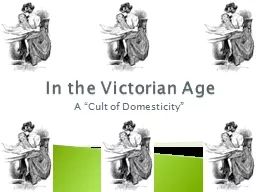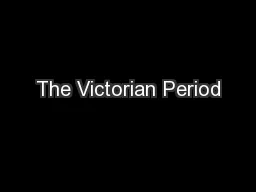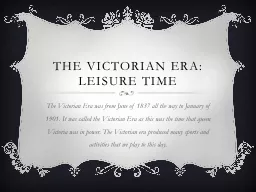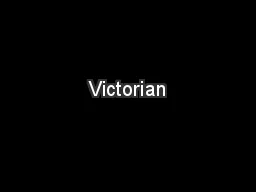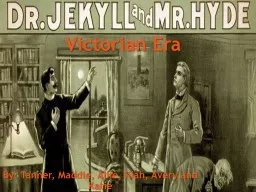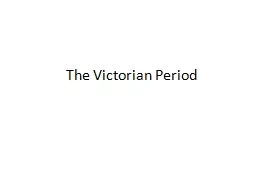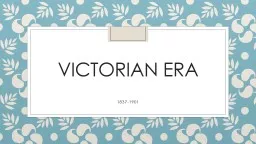PPT-In the Victorian Age A “Cult
Author : tawny-fly | Published Date : 2018-10-28
of Domesticity In Englishspeaking countries the period from about 1850 to 1901 is known as Victorian Age The expression refers not only to the reign of Queen Victoria
Presentation Embed Code
Download Presentation
Download Presentation The PPT/PDF document "In the Victorian Age A “Cult" is the property of its rightful owner. Permission is granted to download and print the materials on this website for personal, non-commercial use only, and to display it on your personal computer provided you do not modify the materials and that you retain all copyright notices contained in the materials. By downloading content from our website, you accept the terms of this agreement.
In the Victorian Age A “Cult: Transcript
Download Rules Of Document
"In the Victorian Age A “Cult"The content belongs to its owner. You may download and print it for personal use, without modification, and keep all copyright notices. By downloading, you agree to these terms.
Related Documents

